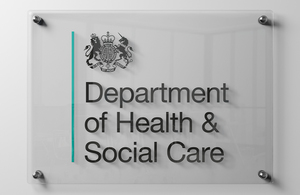Chief Medical Officer publishes annual report on state of the public’s health
Concerns about normalisation of overweight, possible links between deafness, blindness and dementia and pedestrian and cycle safety.

Being overweight is becoming normal as the majority of our adult population is overweight or obese, Chief Medical Officer Professor Dame Sally Davies will say today as she publishes her latest annual report on the state of the public’s health.
Her concern is based on data showing that – taking into account average height and weight – the average man and woman in England is overweight. This brings with it an increased risk of diabetes, strokes and other health problems. The report highlights studies that show some people who are overweight believe they are ‘about the right weight’.
The Chief Medical Officer’s Surveillance report is the first of two volumes of her annual report and is a compendium of data covering a number of public health areas. Key areas of concern for the CMO featuring in this year’s report are:
-
Obesity – According to estimates, almost two thirds of adults and one third of children under 18 are overweight or obese. She highlights that, in one study, 77 percent of parents of overweight children did not recognise that their child was overweight.
-
Deafness and blindness and dementia – The GP patient survey shows a greater prevalence of dementia, including Alzheimer’s disease, in those with severe vision loss or severe hearing impairment. The CMO highlights the lack of robust data which hampers our understanding of this possible association. The CMO says that investigating this potential link could tell us more about the causes of dementia.
-
Alcohol – In popular culture, drinking alcohol to excess is sometimes portrayed as normal behaviour. An analysis of six weeks of soap operas in the UK in 2010 found 162 instances of characters drinking to excess, with negative consequences rarely shown. In fact, 75 per cent of the population does not consume excessive quantities of alcohol, and the proportion of the population which abstains from alcohol is increasing.
-
Walking and cycling – Safety for pedestrians and cyclists must be improved if we are to encourage people to walk and cycle more and reap the associated health benefits. The risk of serious injury for each kilometre travelled on a bike is 21 times higher than by car. The CMO says that the relative risks of walking and cycling are unacceptably high and must be reduced and that an integrated approach to improving safety for all road users must be taken.
Professor Dame Sally Davies says:
I have long been concerned that being underweight is often portrayed as the ideal weight, particularly in the fashion industry.
Yet I am increasingly concerned that society may be normalising being overweight.
Larger mannequins are being introduced into clothes shops, “size inflation” means that clothes with the same size label have become larger in recent decades, and news stories about weight often feature pictures of severely obese people, which are unrepresentative of the majority of overweight people.
The report also reaffirms the CMO’s previous views on added sugar in drinks and alcohol minimum pricing. The report highlights the fact that in children aged 11-18, almost a third of the added sugar in their average diet comes from soft drinks. The CMO calls on manufacturers to reformulate and resize products to use less sugar where possible. She also says that if voluntary efforts fail, then we may need to consider the benefits of regulation such as a ‘sugar tax’. She also said we should explore the impact of minimum unit pricing for alcohol in Scotland, if it is introduced there.
Read the CMO’s report
About the CMO’s Annual report
The role of the Chief Medical Officer dates back to 1855, when Sir John Simon was appointed the first Medical Officer for the General Board of Health. Following the dissolution of that board in 1855, the role transferred to the Privy Council in 1858. As Chief Medical Officer to the Privy Council, Sir John started the tradition of a Chief Medical Officer’s annual report, providing an independent assessment of the state of the public’s health to Government.
Each year the Chief Medical Officer produces two volumes of her report.
Volume One is designed as a surveillance report, bringing together a large amount of data and information about the public’s health. Volume Two is designed to concentrate on one specific health issue or area in detail.
The Chief Medical Officer’s annual report Volume Two, 2013, is due to be published in the summer of 2014 and will look at public mental health.
Naming convention: The Chief Medical Officer’s reports are historically named after the year to which the majority of data refers, rather than the year of publication. There is normally a time lag between when data is gathered and when it is published. Therefore, this report is called “Annual Report of the Chief Medical Officer Volume One 2012” as most of the data covers 2012.
Chapters in this year’s report are:
-
Health and employment
-
Health and justice
-
Sensory impairment
-
Diet, physical exercise and obesity
-
Cancer trends
-
Liver disease
All of the underlying data used to create the images in this report is available via the Department of Health pages at gov.uk.